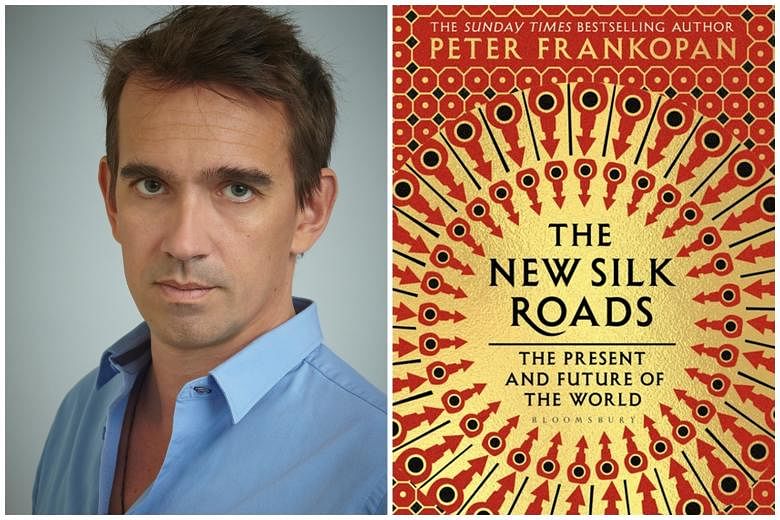CURRENT AFFAIRS
THE NEW SILK ROADS: THE PRESENT AND FUTURE OF THE WORLD
By Peter Frankopan
Bloomsbury/291 pages/ $30.58 with GST/Books Kinokuniya/
3 stars
Early in Peter Frankopan's book is a nugget of information about how the rise of China's middle class has led to a black market in donkey hides in Africa.
Donkey hides are an ingredient in a popular alternative medicine in China. Demand for the ingredient drove up the prices of the animals in African countries where they are crucial pack animals. As a result, some African countries have banned its export, leading to an emergence of a black market for such goods.
Another intriguing bit of trivia details how parents using talcum powder for their babies might be unwittingly linked in a supply chain that benefits the Taleban as well as the Islamic State in Iraq and Syria (ISIS).
Afghanistan is home to rich mineral deposits, including hydrated magnesium silicate - also known as talcum powder - which are exploited by militant groups for funds.
These Freakonomics-style tidbits are characteristic of Frankopan's writing, as fans of his 2015 book The Silk Roads: A New History Of The World can attest.
The professor of global history at Oxford University has an eye for the vivid detail that brings history alive on the page. And he is not short on ambition, as the sprawling narratives of his books demonstrate.
The New Silk Roads picks up where the previous book left off and attempts to further his central thesis that the Middle East, where ancient trade routes between the East and the West intersected, was and remains the beating heart of the world's geopolitical and economic systems.
This book, like its predecessor, is evidence of Frankopan's extensive and exhaustive research, as evinced by more than 60 pages of footnotes. Unlike his previous 650-odd-page tome, however, this one feels positively lightweight, literally and metaphorically.
Frankopan admits in his introduction that the book began life as an epilogue to The Silk Roads.
For those who have read the first book, this feels like a lengthy addendum to the previous book.
Anyone who has kept up with the tumult of current affairs and daily headlines in the past four years will find little that is new in the sections tracing United States President Donald Trump's foreign policy missteps. Ditto The Roads To Beijing chapter, which details the epic embrace, and darker implications of, China's One Belt, One Road initiative.
Regular readers of this newspaper, which has carried multiple opinion pieces on China's charm offensive as well as its flexing of military muscles, will find bare pickings here.
Frankopan is well-intentioned in pivoting from a Western-centric perspective to a viewpoint that acknowledges the centrality of the ancient Middle Eastern and Eastern civilisations.
But some of his writing about China, the Middle East and near East still read a little bit like white "mansplaining". Perhaps this is due to the erratic pitch of the narrative.
On one page, Frankopan explains succinctly the geopolitical implications of the Turkmenistan-Afghanistan-Pakistan-India pipeline and why it is important.
On another page, he mentions in a throwaway line the landmark agreement on the legal status of the Caspian Sea, assuming readers already know the background to this issue which has stabilised prickly border relations among its five littoral states.
If his narrative is aimed at readers already well-versed enough to understand his references without searching the Internet for answers, then his insights are hardly earth-shattering.
The world is pivoting East as America and Europe's foreign policies, driven by domestic disagreements, become increasingly insular.
The economic rise of China, a long familiar tale in the latter half of the last millennium, is now accompanied by confident foreign policy forays as it seeks to consolidate its economic gains as well as fill the leadership vacuum left by America in the global order.
While Frankopan is not the only one documenting these hectic changes in the world order, he does have an informed perspective courtesy of his research and interest in global history.
What he succeeds best in doing with this book is to wrangle scary current affairs developments into a broader framework that takes into account world history prior to the Western dominated narrative of the past 300 years.
This approach works best as a primer for Western readers who want to learn more about the latest shifts in geopolitical positioning and what this may mean for the waning power of the West, in both the real world and in the narrative history of mankind.
In his concluding chapter, Frankopan writes: "This is no new world being born; it is an old world being reborn."
Asia is already aware of this. And it is about time the West woke up to this reality too.
If you like this, read: Dealing With An Ambiguous World by Bilahari Kausikan (World Scientific Publishing, 160 pages, $25.68 with GST, Books Kinokuniya). This series of lectures by the former diplomat on US-China relations, South China Sea disputes and Asean is informed by his long career in practical diplomacy and offers realpolitik insights on a rapidly changing world order.


